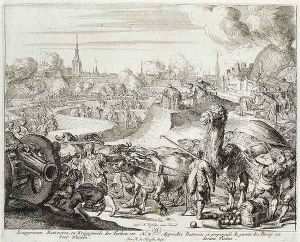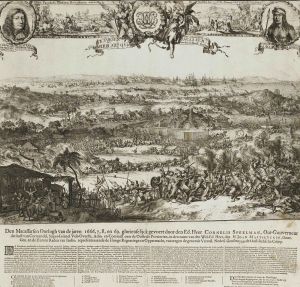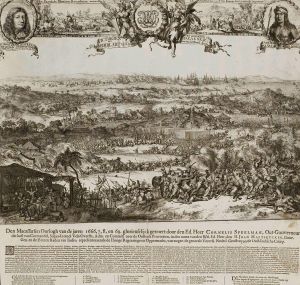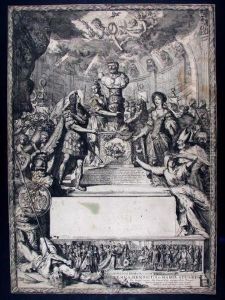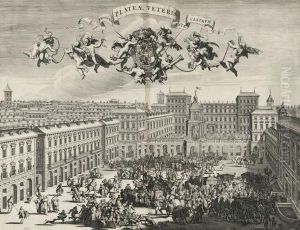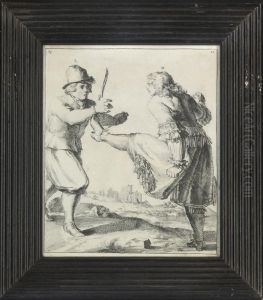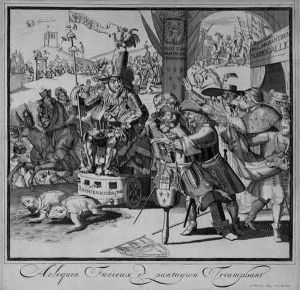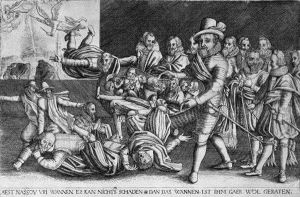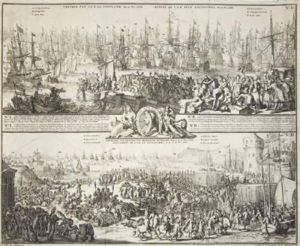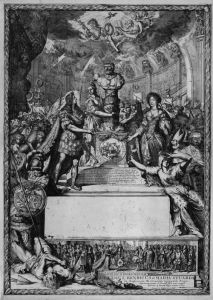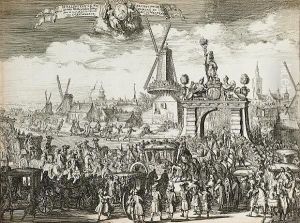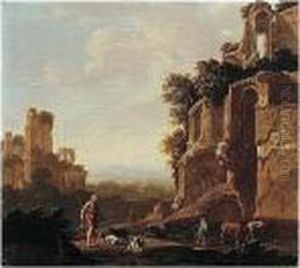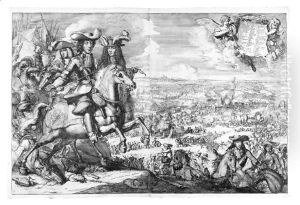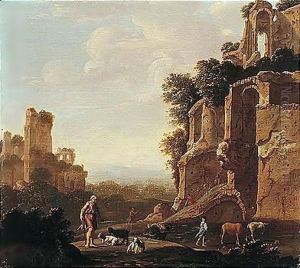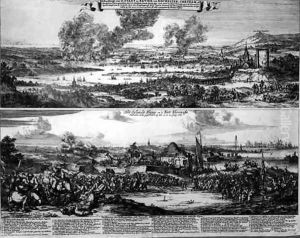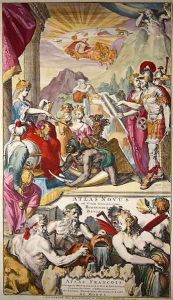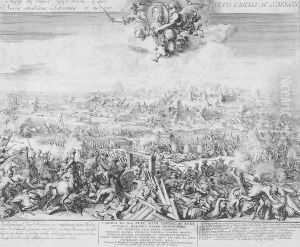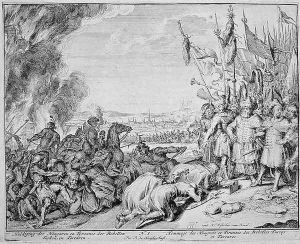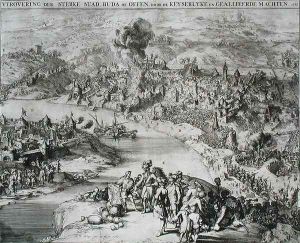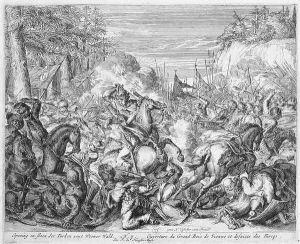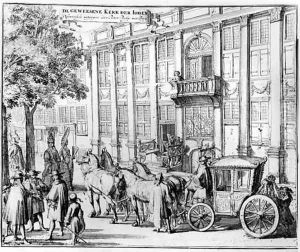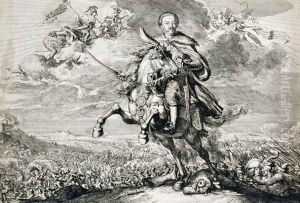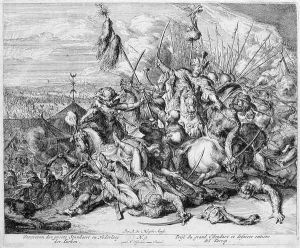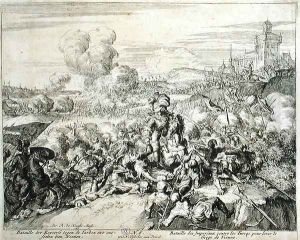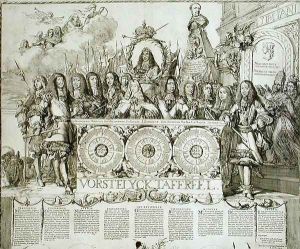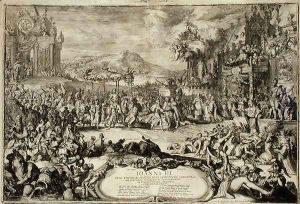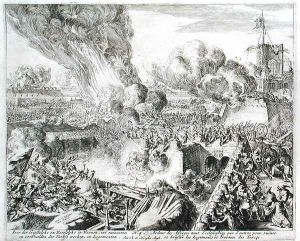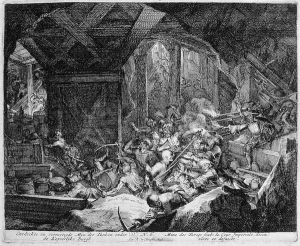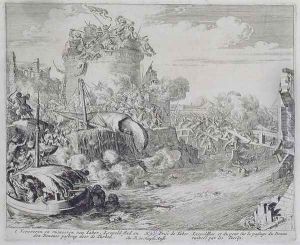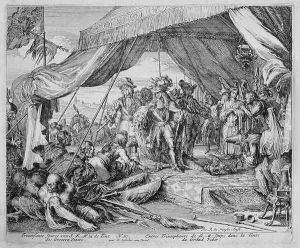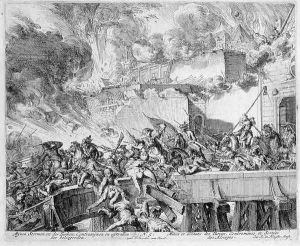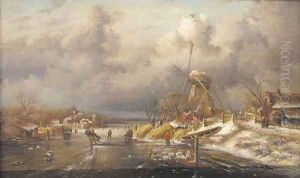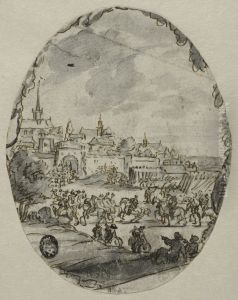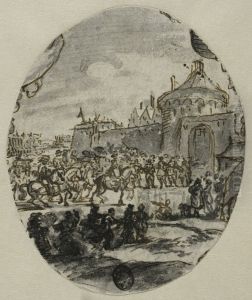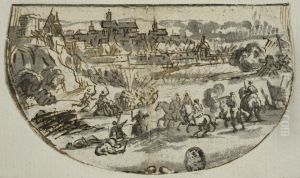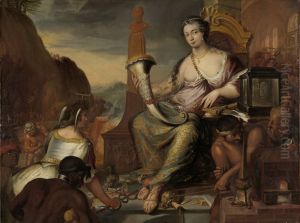Romeyn de Hooghe Paintings
Romeyn de Hooghe was a Dutch Golden Age painter, sculptor, engraver, and caricaturist, known for his versatile skills and prolific output. Born in Amsterdam in 1645, de Hooghe embarked on his artistic journey at a young age, showcasing a remarkable talent for printmaking and illustration.
De Hooghe's work ranged from book illustrations to print series and independent prints. He was particularly adept at etching, a technique where he excelled and through which he gained notoriety. His style was characterized by intricate detail and a lively sense of composition, often imbued with a satirical edge, reflecting the socio-political climate of his time.
Throughout his career, Romeyn de Hooghe engaged with a variety of subjects, including history, allegory, and mythology, as well as current events, which he depicted with a critical eye. He also produced a significant number of political caricatures, which were sometimes controversial but always demonstrated his sharp wit and capacity for social commentary.
In addition to his work as an artist, de Hooghe was a prolific art theorist and writer. He contributed to the theoretical discourse on art in the Dutch Republic, further solidifying his reputation not only as an artist but also as a thinker and intellectual of his era.
De Hooghe's legacy is a testament to the breadth of his talent and the impact of his work on the art of printmaking. His engravings and illustrations have been collected and studied extensively, offering insight into the cultural and political life of the 17th century Netherlands. Romeyn de Hooghe passed away in Haarlem in 1708, leaving behind a body of work that continues to be celebrated for its artistry and historical significance.
